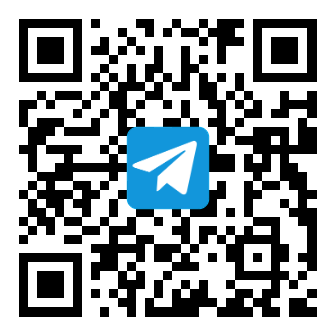
在金融领域的开发中,获取实时的外汇和指数数据至关重要。本教学将指导你如何使用 Java 语言订阅免费的外汇 API 和指数 API,主要通过 WebSocket 技术实现数据的实时获取。
一、技术原理
WebSocket 是一种在单个 TCP 连接上进行全双工通信的协议,它使得客户端和服务器之间可以实时交换数据。在本示例中,我们使用 Java 的 WebSocket API 来连接到提供外汇和指数数据的服务器,并订阅我们需要的数据频道。
二、准备工作
开发环境:确保你已经安装了 Java 开发环境(JDK),并且配置好了相关的环境变量。
IDE:推荐使用 IntelliJ IDEA、Eclipse 等集成开发环境,方便代码的编写和调试。
API 服务:本示例使用wss://``api.itick.org/sws作为 WebSocket 服务器地址,你需要确保该服务可用。同时,你需要获取自己的 API Key 用于鉴权。
三、代码解析
(1) 引入必要的包
import javax.websocket.ClientEndpoint;
import javax.websocket.CloseReason;
import javax.websocket.ContainerProvider;
import javax.websocket.OnClose;
import javax.websocket.OnError;
import javax.websocket.OnMessage;
import javax.websocket.OnOpen;
import javax.websocket.Session;
import javax.websocket.WebSocketContainer;
import java.io.IOException;
import java.net.URI;
import java.net.URISyntaxException;
这些包提供了 Java 中使用 WebSocket 的核心功能,包括客户端端点的定义、连接管理、消息处理等。
(2)定义 WebSocket 客户端端点
@ClientEndpoint
public class WebSocketSubscriber {
@ClientEndpoint注解将该类标记为 WebSocket 客户端端点,用于处理与 WebSocket 服务器的交互。
(3)配置服务器地址和消息格式
// WebSocket服务器的地址
private static final String WEBSOCKET_SERVER_URL = "wss://api.itick.org/sws";
// 用于鉴权
private static final String AUTH_MESSAGE = "{\n" +
" \"ac\":\"auth\",\n" +
" \"params\":\"you_apikey\"\n" +
"}";
// 用于订阅的消息格式,这里假设订阅一个名为 "your_channel" 的频道
private static final String SUBSCRIBE_MESSAGE = "{\n" +
" \"ac\":\"subscribe\",\n" +
" \"params\":\"AM.LPL,AM.LPL\",\n" +
" \"types\":\"depth,quote\"\n" +
"}";
WEBSOCKET_SERVER_URL定义了要连接的 WebSocket 服务器地址。AUTH_MESSAGE是用于鉴权的消息,需要将you_apikey替换为你自己的 API Key。SUBSCRIBE_MESSAGE是订阅消息,params字段指定了要订阅的频道,types字段指定了要获取的数据类型。
(4)主方法
public static void main(String[] args) {
try {
// 创建WebSocket容器
WebSocketContainer container = ContainerProvider.getContainer();
// 连接到WebSocket服务器并获取会话
Session session = container.connectToServer(WebSocketSubscriber.class, new URI(WEBSOCKET_SERVER_URL));
// 发送鉴权消息
session.getBasicRemote().sendText(AUTH_MESSAGE);
// 发送订阅消息
session.getBasicRemote().sendText(SUBSCRIBE_MESSAGE);
} catch (URISyntaxException | IOException e) {
e.printStackTrace();
}
}
在main方法中,首先创建了一个 WebSocket 容器,然后使用该容器连接到指定的 WebSocket 服务器,并获取会话。接着,通过会话发送鉴权消息和订阅消息。
(5)事件处理方法
@OnOpen
public void onOpen(Session session) {
System.out.println("WebSocket连接已打开");
}
@OnMessage
public void onMessage(Session session, String message) {
System.out.println("收到消息: " + message);
// 这里可以根据收到的消息内容进行进一步的处理,比如解析JSON数据等
}
@OnError
public void onError(Session session, Throwable error) {
System.out.println("WebSocket错误: " + error.getMessage());
}
@OnClose
public void onClose(Session session, CloseReason closeReason) {
System.out.println("WebSocket连接已关闭,原因: " + closeReason.getReasonPhrase());
}
@OnOpen注解的方法在 WebSocket 连接成功打开时被调用。@OnMessage注解的方法在接收到服务器发送的消息时被调用,你可以在这个方法中对收到的消息进行进一步的处理,比如解析 JSON 数据。@OnError注解的方法在发生错误时被调用,@OnClose注解的方法在 WebSocket 连接关闭时被调用。
四、运行代码
将上述代码复制到你的 Java 项目中。
替换AUTH_MESSAGE中的you_apikey为你自己的 API Key。
根据你的需求修改SUBSCRIBE_MESSAGE中的订阅频道和数据类型。
运行main方法,观察控制台输出,你应该能够看到连接状态、收到的消息以及可能出现的错误信息。
五、注意事项
API Key 安全:确保你的 API Key 不被泄露,避免造成安全风险。
数据格式解析:根据 API 提供的数据格式,正确解析接收到的消息,以获取有用的外汇和指数数据。
网络稳定性:由于 WebSocket 依赖网络连接,确保网络稳定,以避免数据丢失或连接中断。
通过以上步骤,你应该能够成功使用 Java 语言订阅免费的外汇 API 和指数 API,并获取实时的金融数据。希望本教学对你有所帮助!
iTick:是一家数据代理机构,为金融科技公司和开发者提供可靠的数据源 APIs,涵盖外汇 API、股票 API、加密货币 API、指数 API 等,#帮助构建创新的交易和分析工具,目前有免费的套餐可以使用基本可以满足个人量化开发者需求
开源股票数据接口地址:
https://github.com/itick-org
申请免费 Apikey 地址:
https://itick.org


